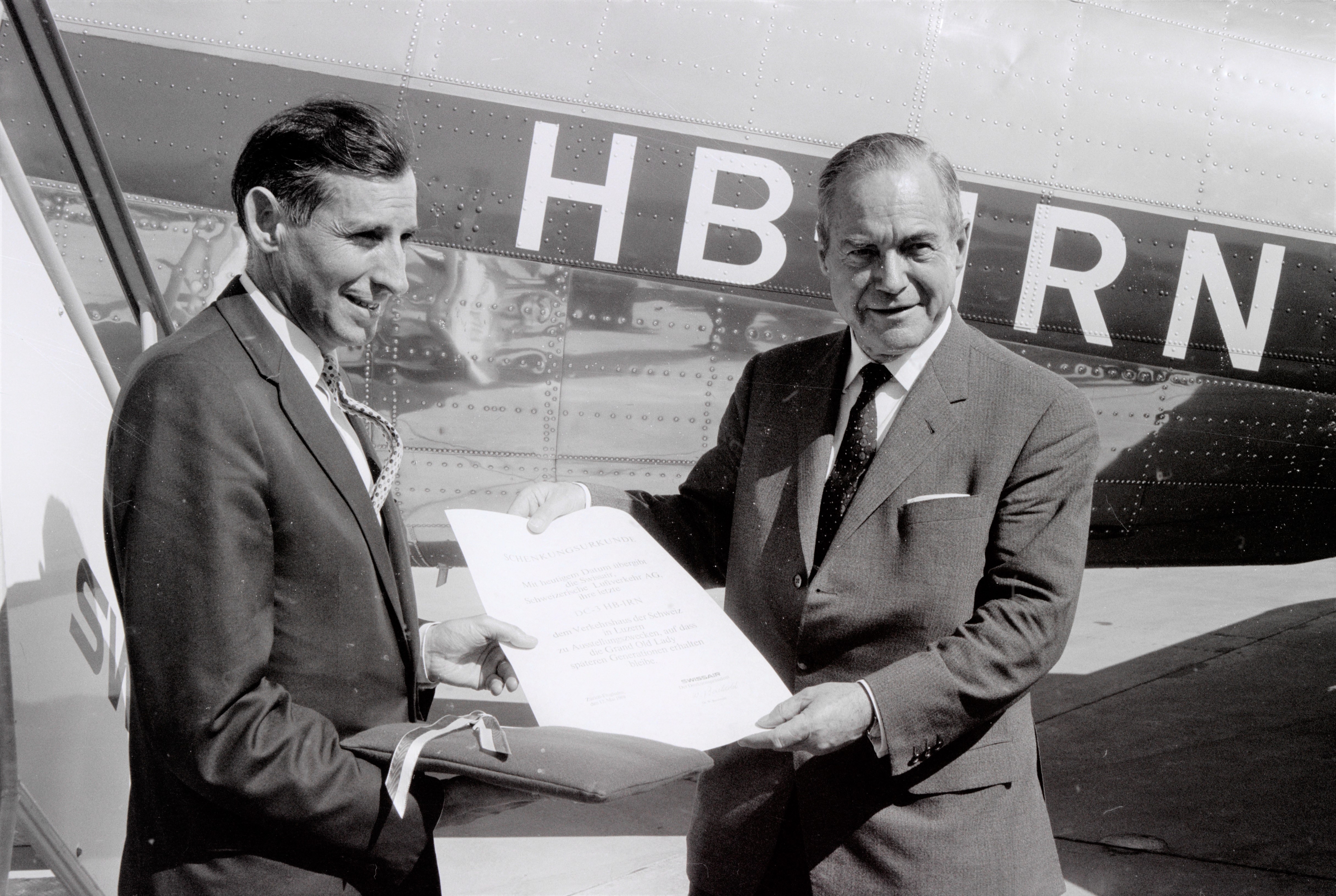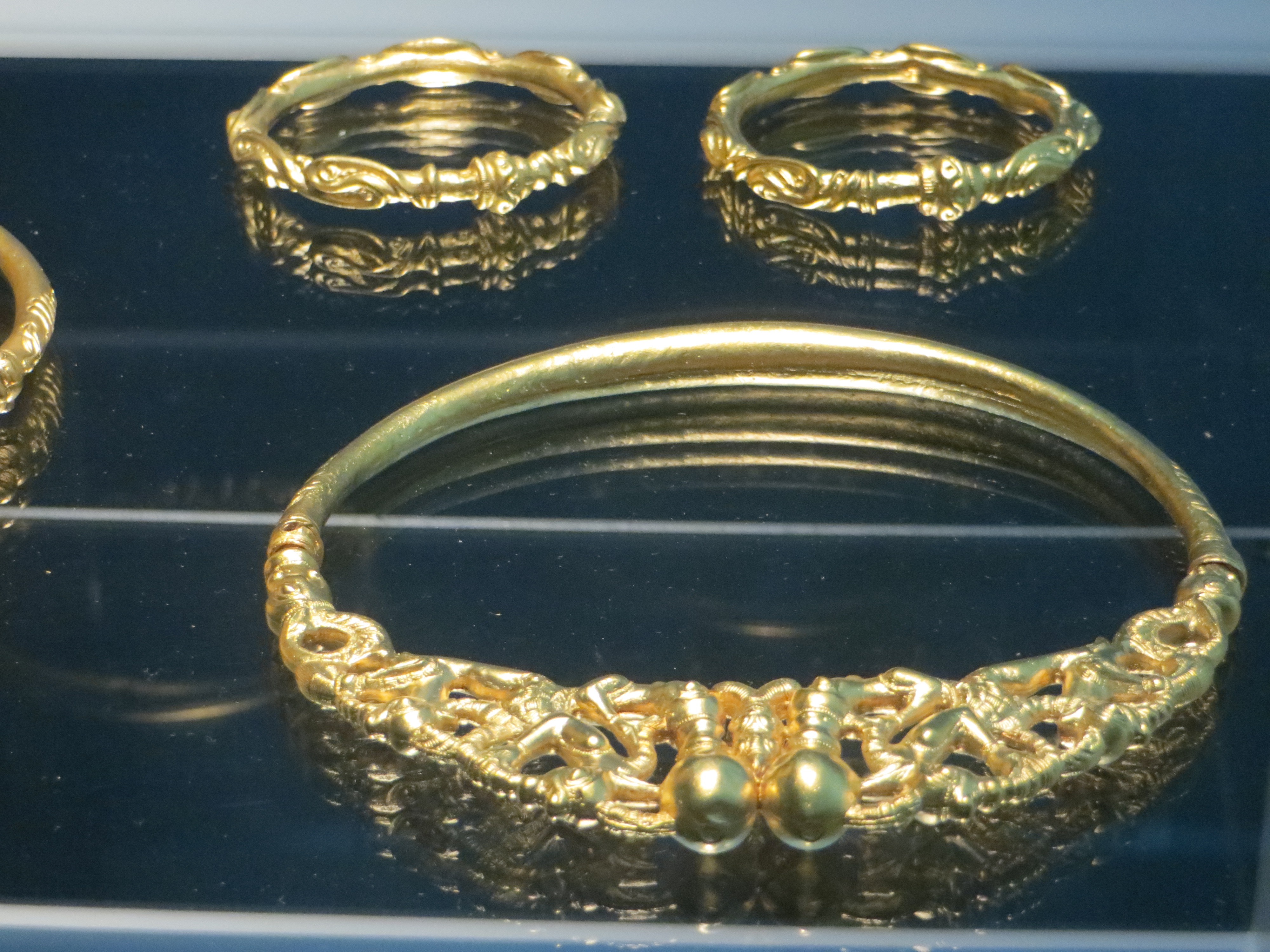|
Swiss Museum Of Transport
The Swiss Museum of Transport or Verkehrshaus der Schweiz (literally "Transportation House of Switzerland") in Lucerne opened in July 1959 and exhibits all forms of transport including trains, automobiles, ships and aircraft as well as communication technology. It is Switzerland's most popular museum. The museum also maintains a large collection of work by Hans Erni, a local painter and sculptor. There are several other attractions in the museum besides the collection, including a planetarium, a large-format cinema and a 1:20,000 scale aerial photograph of Switzerland. History The museum traces its history to 1897, when the first attempts at creating a museum of railway equipment were made. Following a national exhibition in 1914, the Swiss Railway Museum was founded by Swiss Federal Railways in 1918 in Zurich. The concept eventually grew to encompass all transportation and, in 1942, the Swiss Museum of Transport association was established. Swiss Federal Railways was joined b ... [...More Info...] [...Related Items...] OR: [Wikipedia] [Google] [Baidu] |
Lucerne
Lucerne ( , ; High Alemannic German, High Alemannic: ''Lozärn'') or Luzern ()Other languages: gsw, Lozärn, label=Lucerne German; it, Lucerna ; rm, Lucerna . is a city in central Switzerland, in the Languages of Switzerland, German-speaking portion of the country. Lucerne is the capital of the canton of Lucerne and part of the Lucerne (district), district of the same name. With a population of approximately 82,000 people, Lucerne is List of cities in Switzerland, the most populous city in Central Switzerland, and a nexus of economics, transportation, culture, and media in the region. The city's urban area consists of 19 municipalities and towns with an overall population of about 220,000 people. Owing to its location on the shores of Lake Lucerne (german: Vierwaldstättersee) and its outflow, the river Reuss (river), Reuss, within sight of the mounts Pilatus (mountain), Pilatus and Rigi in the Swiss Alps, Lucerne has long been a destination for tourists. One of the city's landm ... [...More Info...] [...Related Items...] OR: [Wikipedia] [Google] [Baidu] |
Swiss Northern Railway
The Swiss Northern Railway (German: ''Schweizerische Nordbahn'', SNB), informally known as the ''Spanisch-Brötli-Bahn'', opened the first railway line within Switzerland in 1847, the Zürich–Baden line. This followed the extension of a French railway to Basel in 1844. The original line generally followed the south bank of the Limmat from Zürich to near its confluence with the Aar near Brugg and then it generally followed the south bank of the Aar to Olten. It was absorbed into the Swiss Northeastern Railway (German: ''Schweizerische Nordostbahn'', NOB) in 1853 and extended from Baden to Brugg in 1858. The line was absorbed into the Swiss Federal Railways on its establishment in 1902. It is electrified at 15 kV 16.7 Hz and its eastern 16 km section from Zürich to Killwangen-Spreitenbach is now part of the Zürich–Olten trunkline and has four tracks. History The section between Zürich and Baden was opened on 7 August 1847 by the Swiss Northeastern Railway ... [...More Info...] [...Related Items...] OR: [Wikipedia] [Google] [Baidu] |
Blériot XI
The Blériot XI is a French aircraft of the pioneer era of aviation. The first example was used by Louis Blériot to make the first flight across the English Channel in a heavier-than-air aircraft, on 25 July 1909. This is one of the most famous accomplishments of the pioneer era of aviation, and not only won Blériot a lasting place in history but also assured the future of his aircraft manufacturing business. The event caused a major reappraisal of the importance of aviation; the English newspaper ''The Daily Express'' led its story of the flight with the headline "Britain is no longer an Island". It was produced in both single- and two-seat versions, powered by several different engines, and was widely used for competition and training purposes. Military versions were bought by many countries, continuing in service until after the outbreak of World War I in 1914. Two restored examples – one in the United Kingdom and one in the United States — of original Blériot XI a ... [...More Info...] [...Related Items...] OR: [Wikipedia] [Google] [Baidu] |
Dufaux 4
__NOTOC__ The Dufaux 4 was an experimental aircraft built in Switzerland in 1909 and which was originally constructed as an unnamed biplane, the third aircraft constructed by the brothers Armand and Henri Dufaux. The aircraft was entirely conventional for the era - a two-bay biplane with unstaggered wings of equal span and a triangular-section fuselage. Construction began in mid-September 1909 and work proceeded rapidly, as the brothers hoped to claim a CHF 1,000 prize put up by the Automobile Club de Suisse for the first Swiss-built aircraft to fly a 1 km closed-circuit. In early December, flight tests commenced at a field in Corsier. Although the machine made a few hops, it would not fly. The Dufaux brothers concluded that the field chosen was too small to give the aircraft enough room to build up speed for takeoff, so they selected a new location for their tests in Viry, in neighbouring France. The aircraft was assembled there on December 16 and a number of successf ... [...More Info...] [...Related Items...] OR: [Wikipedia] [Google] [Baidu] |
Swiss Council For Accident Prevention
Swiss may refer to: * the adjectival form of Switzerland *Swiss people Places *Swiss, Missouri * Swiss, North Carolina *Swiss, West Virginia *Swiss, Wisconsin Other uses *Swiss-system tournament, in various games and sports *Swiss International Air Lines **Swiss Global Air Lines, a subsidiary *Swissair, former national air line of Switzerland *.swiss alternative TLD for Switzerland See also *Swiss made, label for Swiss products *Swiss cheese (other) *Switzerland (other) *Languages of Switzerland, none of which are called "Swiss" *International Typographic Style, also known as Swiss Style, in graphic design *Schweizer (other), meaning Swiss in German *Schweitzer, a family name meaning Swiss in German *Swisse Swisse is a vitamin, supplement, and skincare brand. Founded in Australia in 1969 and globally headquartered in Melbourne, and was sold to Health & Happiness, a Chinese company based in Hong Kong previously known as Biostime International, in a ... [...More Info...] [...Related Items...] OR: [Wikipedia] [Google] [Baidu] |
NRLA
The New Railway Link through the Alps (NRLA; german: Neue Eisenbahn-Alpentransversale, NEAT, french: nouvelle ligne ferroviaire à travers les Alpes, NLFA, it, Nuova ferrovia transalpina, NFTA), is a Swiss construction project for faster north–south rail links across the Swiss Alps. It consists of two axes with several improvements along these rails including three new base tunnels several hundred metres below the existing apex tunnels, the Gotthard Base Tunnel, the Lötschberg Base Tunnel, and the Ceneri Base Tunnel. Swiss Federal Railways subsidiary AlpTransit Gotthard AG and BLS AG subsidiary BLS Alp Transit AG (now BLS Netz AG) were founded for this project and built the tunnels. The total projected cost of the project was CHF 12.189 billion at its 1998 start; in December 2015, its final cost was projected to be CHF 17.900 billion. The 1998 projected total cost of the Gotthard Base Tunnel was CHF 6.323 billion; in December 2015, its final ... [...More Info...] [...Related Items...] OR: [Wikipedia] [Google] [Baidu] |
Wassen
Wassen is a municipality in the canton of Uri in Switzerland. Geography , Wassen has an area of . Of this area, 12.5% is used for agricultural purposes, while 18.2% is forested. Of the rest of the land, 1.1% is settled (buildings or roads) and the remainder (68.1%) is non-productive (rivers, glaciers or mountains). , 9.6% of the total land area was heavily forested, while 6.8% is covered in small trees and shrubbery. Of the agricultural land, 2.5% is used for orchards or vine crops and 10.1% is used for alpine pastures. Of the settled areas, 0.2% is covered with buildings, and 0.8% is transportation infrastructure. Of the unproductive areas, 0.1% is unproductive standing water (ponds or lakes), 1.2% is unproductive flowing water (rivers), 48.5% is too rocky for vegetation, and 18.3% is other unproductive land. It is on the Gotthard line and the rail line makes a double loop near Wassen to help the trains deal with the climb. The Susten Pass connects Wassen with Innertkirchen. ... [...More Info...] [...Related Items...] OR: [Wikipedia] [Google] [Baidu] |
Göschenen
Göschenen (German, it, Casinotta, rm, Caschanuttais) a village and municipality in the canton of Uri in Switzerland. It sits at the northern end of the Gotthard tunnel. The Göschenen riots (1875) saw Urner troops opening fire on Italian miners demonstrating for better working conditions and wages on the tunnel's construction site. Name Göschenen is first mentioned in 1280 as ''Gesschenden''. The name is from Rumantsch ''*cascina'' (modern ''caschigna'') "alpine hut", from Latin ''capsum'' "corral", but influenced by the word for cheese, ''cascio''. The ''e'' in the first syllable is due to Germanic i-umlaut, changed to ''ö'' in modern spelling is a hypercorrection based on the phonology of the dialect of Uri. Geography Göschenen has an area, , of . Of this area, 7.3% is used for agricultural purposes, while 11.4% is forested. Of the rest of the land, 0.9% is settled (buildings or roads) and the remainder (80.4%) is non-productive (rivers, glaciers or mountains). , 5.1% of ... [...More Info...] [...Related Items...] OR: [Wikipedia] [Google] [Baidu] |
Erstfeld
Erstfeld is a municipality in the canton of Uri in Switzerland. History In 1962 a collection of four gold torques and three gold arm rings were discovered near Erstfeld. While the exact origin date is unknown, they are likely from the 4th century BC. The nearly pure gold rings were discovered under of land slide debris. The rings show celtic motifs and designs and display a high level of skill. While their purpose is unknown, one theory is that they were offerings made to celebrate safely crossing the Alps. Erstfeld is first mentioned in 1258 as ''Ourzcvelt''. In 1638, it was listed under the Latin name ''in Protocampis''. In 1831, it was known as ''Hirschfelden''. Geography Erstfeld has an area, , of . Of this area, 11.7% is used for agricultural purposes, while 29.2% is forested. Of the rest of the land, 2.8% is settled (buildings or roads) and the remainder (56.2%) is non-productive (rivers, glaciers or mountains). , 19.8% of the total land area was heavily forested, whi ... [...More Info...] [...Related Items...] OR: [Wikipedia] [Google] [Baidu] |








